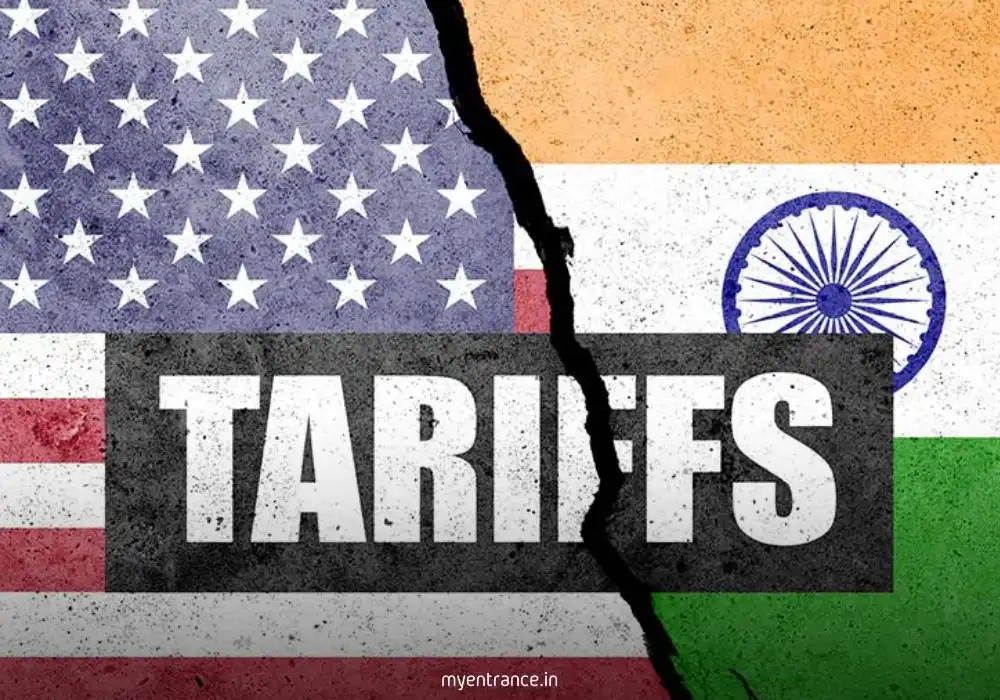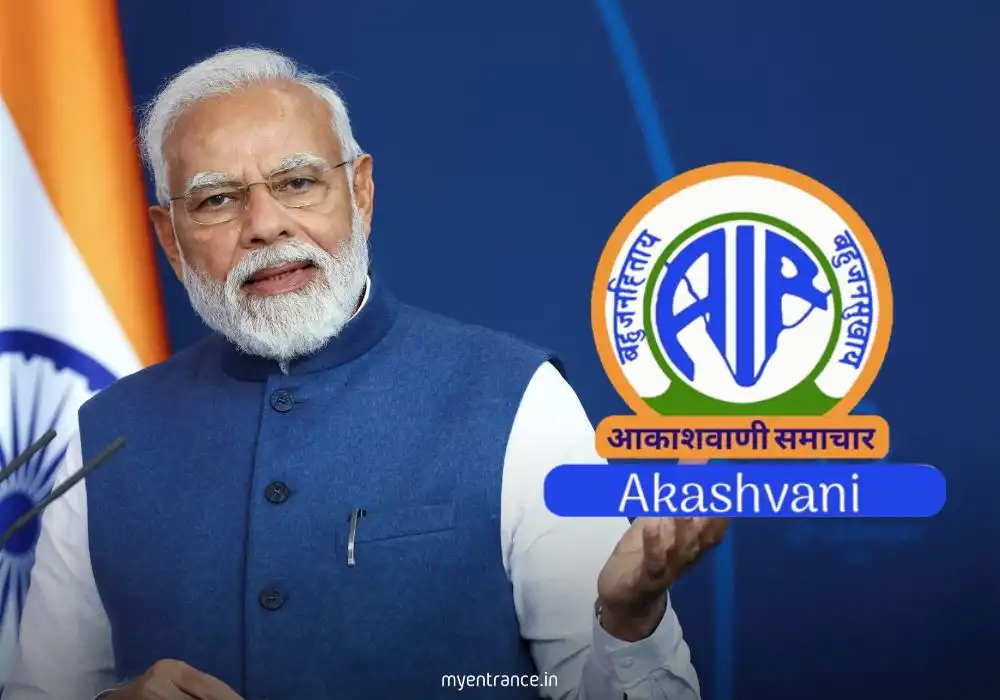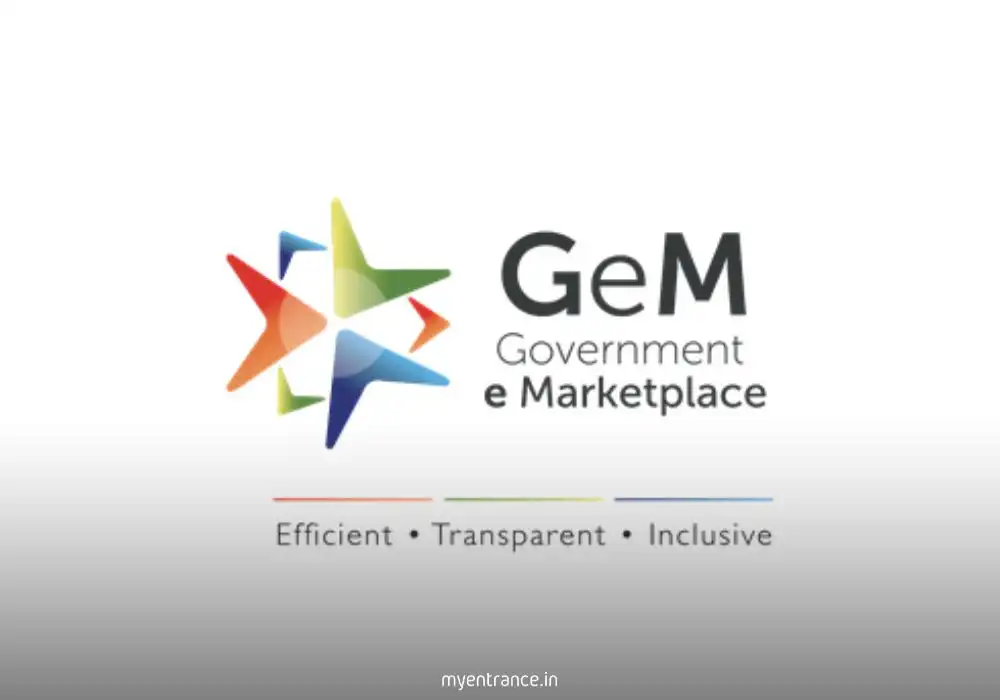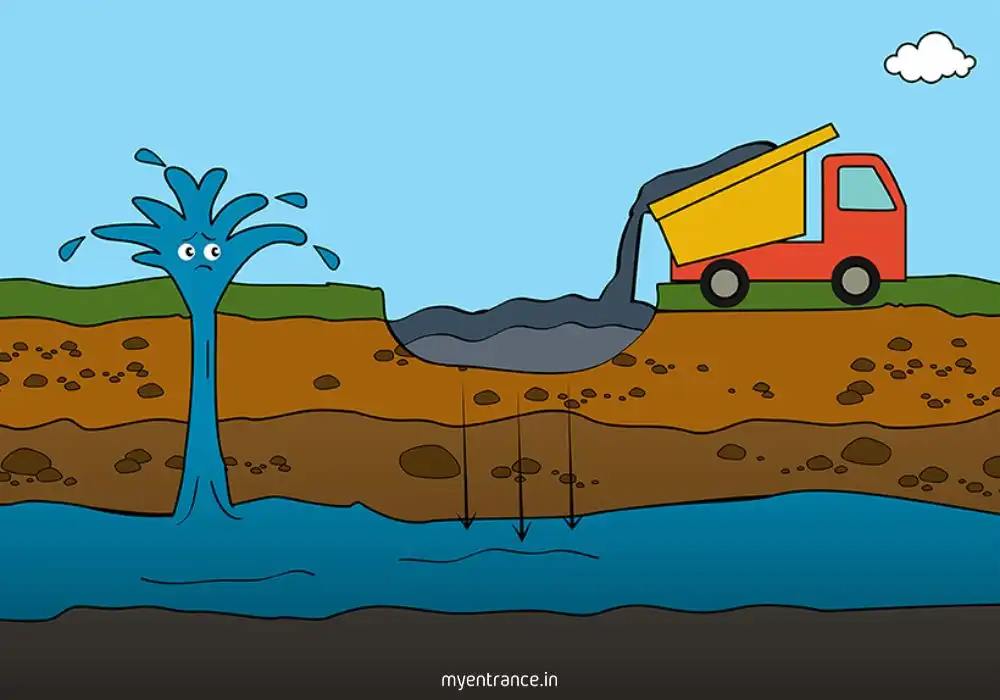Translate Language
Trump’s 50% Tariff on India: Implications for Trade, Economy, and Bilateral Relations
On August 6, former US President Donald Trump announced an additional 25% tariff on Indian imports, raising the total duty to 50%. This decision, framed as a penalty for India’s Russian energy purchases, marks one of the highest tariff impositions by the US on any nation. The move has sparked debates on trade deficits, geopolitical strategies, and India’s potential countermeasures. For aspirants preparing for UPSC, SSC, PSC, and other competitive exams, understanding this development is crucial for both Prelims (Current Affairs) and Mains (International Relations).

What Does a 50% Tariff Mean for India?
1. Economic Impact
Reduced Export Competitiveness: Indian goods in the US market will become 50% more expensive, leading to lower demand.
GDP Contraction: Experts estimate a potential decline of over 0.5% in India’s GDP due to reduced exports.
Trade Deficit Concerns: The US aims to narrow its trade deficit with India by making Indian imports less attractive.
2. Political and Strategic Implications
Negotiation Tactic: The tariff appears less about Russia and more about pressuring India into a favorable trade deal.
Selective Targeting: While India faces steep tariffs, other nations like China and the EU continue trading with Russia without similar penalties.
India’s Response: The Indian government has called the move “unfair and unreasonable,” hinting at possible retaliatory measures.
3. Long-Term Consequences
Shift in Trade Partners: India may explore stronger trade ties with alternative markets like the EU, ASEAN, or Africa.
Domestic Industry Boost: Higher tariffs could encourage Indian manufacturers to focus on domestic and non-US markets.
Defence & Energy Purchases: The US may push India to buy more American defense equipment or crude oil to balance trade.
4. Trump’s Trade Philosophy
Zero-Trade-Deficit Goal: Trump believes balanced trade (no deficit) is the only fair system.
Tariffs as Leverage: He has used tariffs against multiple nations, including allies like the UK and Australia.
Free Trade vs. Protectionism: Despite advocating free trade, Trump’s policies lean towards economic protectionism.
Questions & Answers for Competitive Exams
Q1. Why did the US impose a 50% tariff on Indian imports?
Ans: The US cited India’s purchase of Russian energy as the reason, but experts believe it’s a tactic to force a favorable trade deal and reduce the US trade deficit with India.
Q2. How will the 50% tariff impact India’s economy?
Ans: It may reduce India’s export competitiveness, shrink GDP by over 0.5%, and force India to seek alternative trade partners.
Q3. Is India the only country facing high US tariffs?
Ans: No, the US has imposed tariffs on several nations, including China and the EU, but India now faces one of the highest rates.
Q4. What is India’s official response to the US tariff hike?
Ans: India has termed the move “unfair, unjustified, and unreasonable,” indicating possible retaliatory measures.
Q5. What is Trump’s underlying motive behind imposing tariffs?
Ans: Trump aims to eliminate trade deficits, believing that balanced trade (no deficit) is the only fair system.
Current Affairs Relevance: Crucial for UPSC, SSC, PSC, and other competitive exams.
Trade Deficit Dynamics: Understand how tariffs affect bilateral trade.
Geopolitical Strategy: Analyze how trade policies are used as diplomatic tools.
For more in-depth analysis, mock tests, and daily quizzes on such topics, visit MyEntrance.in – your one-stop destination for exam preparation!
Get 3 Months Free Access for SSC, PSC, NIFT & NID
Boost your exam prep!
Use offer code WELCOME28 to get 3 months free subscription. Start preparing today!















